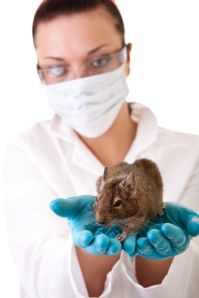 In many different areas of science, animal models are used to begin understanding of diseases and behaviors analogous to humans. This animal model concept has also been used in the understanding of alcoholism and behaviors associated with alcohol consumption. Researchers have found that there are essentially three phases of alcohol consumption: acquisition of drinking alcohol, controlled alcohol-drinking behavior and uncontrolled alcohol-drinking behavior. It is agreed upon that this is a working progression model for alcoholism. Within it are transition phases as well that deal with biological, psychological, and social vulnerability factors. Most studies have only looked at the first phase of this model but more recent works have revealed information about the second and third phases.
In many different areas of science, animal models are used to begin understanding of diseases and behaviors analogous to humans. This animal model concept has also been used in the understanding of alcoholism and behaviors associated with alcohol consumption. Researchers have found that there are essentially three phases of alcohol consumption: acquisition of drinking alcohol, controlled alcohol-drinking behavior and uncontrolled alcohol-drinking behavior. It is agreed upon that this is a working progression model for alcoholism. Within it are transition phases as well that deal with biological, psychological, and social vulnerability factors. Most studies have only looked at the first phase of this model but more recent works have revealed information about the second and third phases.
In a long-term study, researchers exposed rats to varying concentrations of alcohol (5, 10, and 20%) for a 10 month period. During this time, the rats were exposed to the alcohol for 2 months and then deprived of it for 2 months and so on. These rats settled into an alcohol consumption pattern of 4 g/kg for a day and a preference of 5% alcohol. After a time of alcohol depravation the rats experienced a significant rise in alcohol intake (from the normal 4 to 6 g/kg) and preference (higher concentrations, 10 and 20%), this is termed the alcohol depravation effect (ADE). The rats experiencing the ADE not only consumed more alcohol but developed a preference for the higher concentrated alcohol solutions. This was paralleled with a development of increasing consumption of alcohol at inappropriate times of the day in an uncontrolled and compulsive manner. Rats normally stay dormant during the day and partake in minimal activities and being more active during the night hours. The rats began to consume alcohol during light hours and dark hours disregarding normal circadian schedules. This study also found that anti-relapse drugs were able to dampen the ADE so as to decrease the likely hood of increasing alcohol need/want behaviors after relapse.
Despite the strangeness of giving rats alcohol and studying them this study has high relevance to our consumption behaviors and possible treatments. The rats that began drinking more alcohol and at higher concentrations so are now considered to be in a state of uncontrolled alcohol-drinking behavior. Their transference into this stage from controlled alcohol-drinking shows that there are addictive properties to alcohol that need to be addressed with treatment and thus their development of treatment of the rats may be applied to humans with further study. Struggling alcoholics could be given a pill to slightly or completely diminish their psychological need for alcohol.
Another study introduces the reinstatement model for alcohol-seeking behavior. Here, an animal is trained to self-administer alcohol and is then subjected to extinction processes to extinguish the operant conditioning that had been established. Researchers found that the reinstatement of the behavior can be easily renewed with administration of a very small amount of alcohol increasing the subject’s craving by a great deal. This reinstatement model is widely accepted. Studies using this model have suggested that the neuronal substrates mediating alcohol-, stress, and cue-induced reinstatement are not identical. So, more than one neurobiological pathway is linked to provoking alcohol-seeking behavior. This has been shown pharmacologically when different treatments treat different associations made with alcohol. The reinstatement model is therefore used in developing new drugs to fight craving for alcohol.